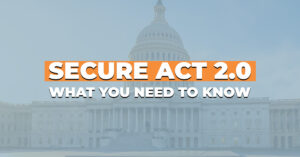 Created by the TCJA in 2017, opportunity zones are designed to help economically distressed areas by encouraging investments. This article contains an introduction to the complex details of how these zones work.
Created by the TCJA in 2017, opportunity zones are designed to help economically distressed areas by encouraging investments. This article contains an introduction to the complex details of how these zones work.
The IRS describes an opportunity zone as “an economically-distressed community where new investments, under certain conditions, may be eligible for preferential tax treatment.” How does a community become an opportunity zone? Localities qualify as opportunity zones when they’ve been nominated by their states. Then, the Secretary of the U.S. Treasury certifies the nomination. The Treasury Secretary delegates authority to the IRS.
The Tax Cuts and Jobs Act added opportunity zones to the tax code. The IRS says opportunity zones are new, although there have been other provisions in the past to help communities in need with tax incentives to spur business.
The new wrinkle is how opportunity zones are designed to stimulate economic development via tax benefits for investors.
- A Qualified Opportunity Fund is an investment vehicle set up as a partnership or corporation for investing in eligible property located in a qualified opportunity zone. A limited liability company that chooses to be treated either as a partnership or corporation for federal tax purposes can organize as a QOF.
- Investors can defer taxes on any prior gains invested in a QOF until whichever is earlier: the date the QOF investment is sold or exchanged or Dec. 31, 2026.
- If the QOF investment is held longer than five years, there is a 10 percent exclusion of the deferred gain.
- If the QOF investment is held for more than seven years, there is a 15 percent exclusion of the deferred gain.
- If the QOF investment is held for at least 10 years, the investor is eligible for an increase in basis on the investment equal to its fair market value on the date that the QOF investment is sold or exchanged.
- You don’t have to live, work or have a business in an opportunity zone to get the tax benefits. But you do need to invest a recognized gain in a QOF and elect to defer the tax on that gain.
- To become a QOF, an eligible corporation or partnership self-certifies by filing Form 8996, Qualified Opportunity Fund, with its federal income tax return.
The first set of opportunity zones covers parts of 18 states and was designated on April 9, 2018. Since then, there have been opportunity zones added to parts of all 50 states, the District of Columbia and five U.S. territories. More details are available on the U.S. Treasury website. Or see the IRS website for more information.
Call us at 832-698-7011 today to discuss how we can help you manage your tax obligations and reduce your tax burden or request a free business consultation and we’ll contact you right away.






